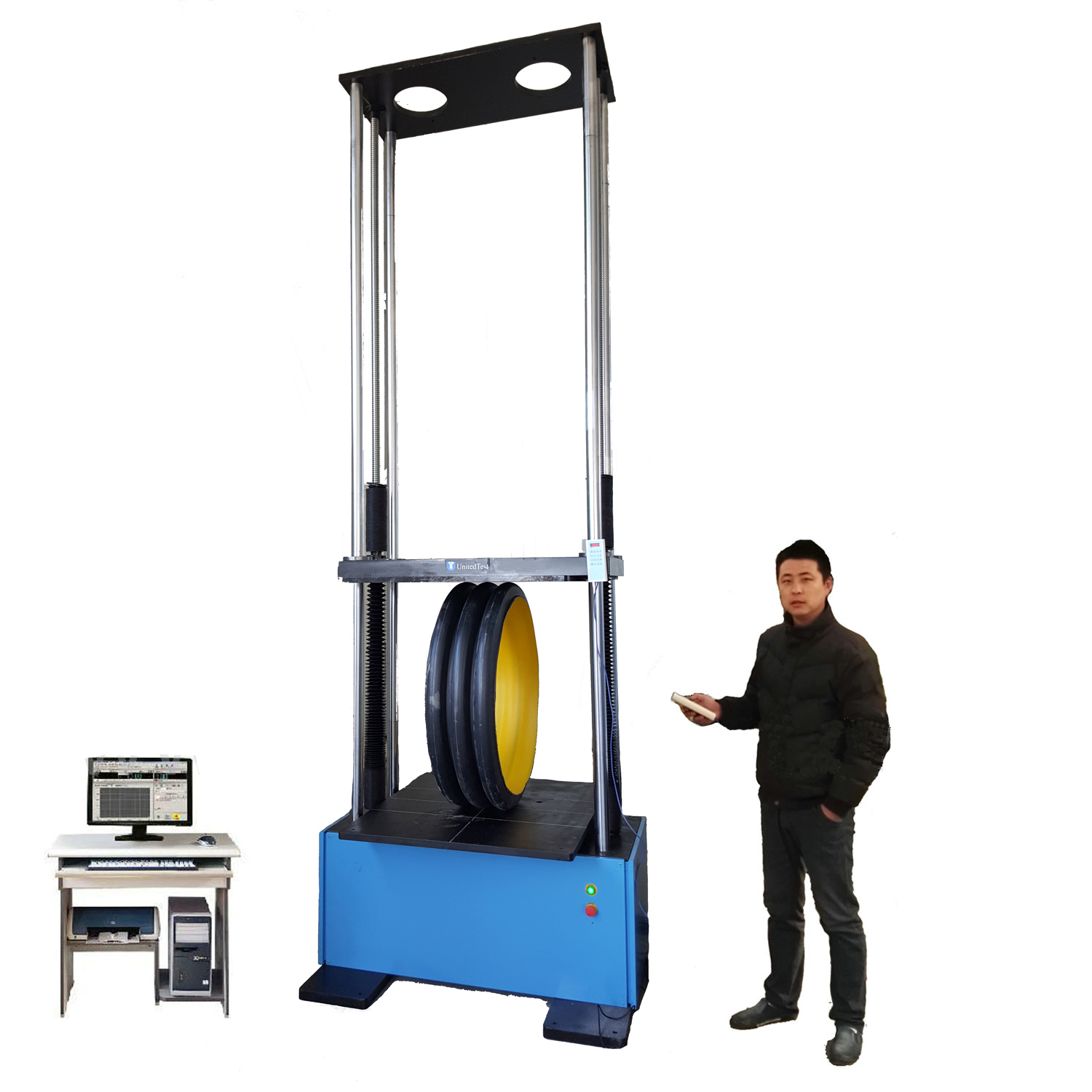ISO 9969 Ring Stiffness Testing: A Critical Standard for Assessing Plastic Pipe Integrity
Date: Aug.2025
Location: Global Plastic Pipe Markets
In an era where sustainability and innovation dictate the evolution of materials, the demand for durable and efficient plastic pipes has never been more pressing. From construction and infrastructure developments to agriculture and aquaculture, the application of plastic piping systems is ubiquitous. However, ensuring these pipes maintain structural integrity under varying loads is paramount. Enter the ISO 9969 ring stiffness testing methodology—a standardized procedure that is revolutionizing the way engineers and manufacturers assure the longevity and performance of plastic pipes.
The Significance of ISO 9969
The International Organization for Standardization (ISO) has long served as a global benchmark for quality and safety across various industries, and ISO 9969 is no exception. This standard specifically assesses the ring stiffness of thermoplastic pipes, which is instrumental in determining their ability to withstand the external pressure and load that they might encounter during their lifespan.
As urbanization accelerates and economies grow, the construction and infrastructure sectors are experiencing renewed vitality. With this revival comes an increased need for reliable materials, particularly plastic pipes, which have become essential components in water supply, sewage systems, and various industrial applications. The ISO 9969 testing method provides stakeholders with a measure of confidence in their products, facilitating compliance with legal regulations and industry guidelines.
Understanding Ring Stiffness Testing
Ring stiffness testing involves the application of a uniform load on a test specimen of a plastic pipe to evaluate its resistance to deformation and failure. It essentially measures how rigid or stiff a pipe is when a load is applied. This is critical because a flexible, low-stiffness pipe may buckle or deform under pressure, leading to failures that can have catastrophic consequences including leaks, flooding, and infrastructure damage. Conversely, pipes designed with optimal stiffness can ensure enhanced load-bearing capabilities, resulting in extended service life and reduced maintenance costs.
The process typically involves the following steps:
Preparation of the Sample: Pipes must be cut to standard lengths, usually with a diameter specified by the ISO 9969 guidelines.
Test Setup: The sample is placed in a testing apparatus that applies a perpendicular force to its diameter.
Measurement of Deformation: As the load is applied, the amount of deformation is measured to determine the pipe's ring stiffness. This stiffness is conventionally expressed in Newtons per millimeter (N/mm).
Analysis: The results feed back into quality control processes, influencing production adjustments and material choices.
Current Market Hotspots
While the importance of ISO 9969 testing is clear, its relevance varies across different regions and sectors. In the construction industry, for instance, the robustness of plastic piping is scrutinized intensely in North America and Europe, with increasing regulations that compel compliance with ISO standards. Market research suggests these regions are significant hotspots for innovation in plastic pipe technology.
Moreover, the construction booms in emerging economies such as India and Brazil are creating new opportunities. In India, government infrastructure programs aimed at urban development have intensified the demand for reliable piping systems. Consequently, manufacturers are not only integrating ISO 9969 testing into their quality protocols, but they are also seeking multiple certifications to strengthen their competitive edge.
Energy and industrial sectors are similarly engaged with the implications of ring stiffness testing. In oil and gas applications, for instance, offshore and onshore drilling operations require robust piping systems that can move fluids efficiently while maintaining structural integrity under harsh conditions. The increases in hydrocarbon prices have spurred investments in infrastructure, emphasizing the need for ISO-compliant materials that guarantee operational efficiency and safety.
Compliance and Performance Enhancement
In addition to ensuring that plastic pipes meet regulatory standards, compliance with ISO 9969 offers a pathway for organizations to enhance overall product performance. By identifying weaknesses early in the manufacturing process, companies can implement design enhancements and material modifications that lead to superior pipe products.
For instance, advanced polyolefin blends are being researched to improve stiffness without adding significant weight. This innovation not only adheres to compliance standards but also addresses market demands for lighter, more efficient materials. Furthermore, the implementation of ring stiffness testing can help facilitate the shift towards augmented reality (AR) and artificial intelligence (AI)-driven predictive analytics, providing manufacturers with real-time data to optimize production cycles and maintenance schedules.
Industry Collaborations and Innovations
The application of ISO 9969 ring stiffness testing also promotes collaboration across the plastics industry. Conferences and symposiums focused on plastic material technologies have increasingly included sessions on the implications of ring stiffness testing, offering a platform for professionals to share best practices and emerging research.
Innovative partnerships between manufacturers, research institutions, and regulatory bodies are crucial for the development of new testing technologies and methodologies. These collaborations yield improvements not only in adherence to ISO standards but also in driving advancements that respond to the evolving needs of industry stakeholders.
Future Outlook
With a growing emphasis on reducing environmental footprints and enhancing the sustainability of materials, the future of plastic pipes will likely see a convergence of innovations that empower the ISO 9969 testing framework. Biodegradable materials, recycled inputs, and lifecycle assessments are becoming increasingly significant, reshaping how pipes are designed, manufactured, and tested.
Additionally, as global supply chains face new challenges, the focus on local manufacturing and sourcing may lead to innovations in testing processes to fit specific environmental conditions unique to different markets.
Conclusion
In summary, ISO 9969 ring stiffness testing is not merely a regulatory requirement; it is an essential component of industry innovation in plastic pipes. As organizations seek to enhance durability, performance, and compliance amid evolving market demands, mastering the nuances of ring stiffness testing will be crucial. By investing in these standardized methodologies, manufacturers can set the stage for unprecedented advancements in product quality and operational efficiency, securing their competitive advantage in the rapidly evolving plastic pipeline market.
As the industry moves forward, stakeholders are encouraged to keep abreast of developments in ISO standards and ring stiffness testing to remain compliant, enhance performance, and ultimately contribute to a more sustainable future within the plastics industry.
Choose the Ring Stiffness Testing Machine here: Pipe Ring stiffness tester_UnitedTest - Material Testing Machine












